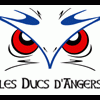Connectez-vous pour activer le suivi
Abonnés
0

FALL PREP SCHOOL SHOWCASE SALEM N-H
Par
GAULOISAA, dans PREP SCHOOLS
Messages recommandés
Veuillez vous connecter pour commenter
Vous pourrez laisser un commentaire après vous êtes connecté.
Connectez-vous maintenant
Connectez-vous pour activer le suivi
Abonnés
0
